
MENUMENU
TALK TO AN EXPERT
Special Hours: 7AM – 6PM PST
TALK TO AN EXPERT
Special Hours: 7AM – 6PM PST
Owning an off-grid cabin can be an exciting adventure. It helps you disconnect from the outside world, get away from it all, and spend quality time with your own thoughts and those who matter most to you. But many folks aren’t willing to give up some of the comforts of home, like water, sewer, and electricity. So how do you go about keeping the lights on in an off-grid cabin? You may have more options than you may think!
Before we work on making the cabin off-grid, it’s crucial to understand exactly what’s meant by “off the grid.” Off-grid homes or other structures are designed to function without any connections to the traditional utilities and other systems that ordinary homes rely on.
This means an off-grid cabin will need to generate its own electricity, harvest and treat its water, and manage its waste. All of these systems present their own challenges, which will vary based on the location and climate of the cabin.
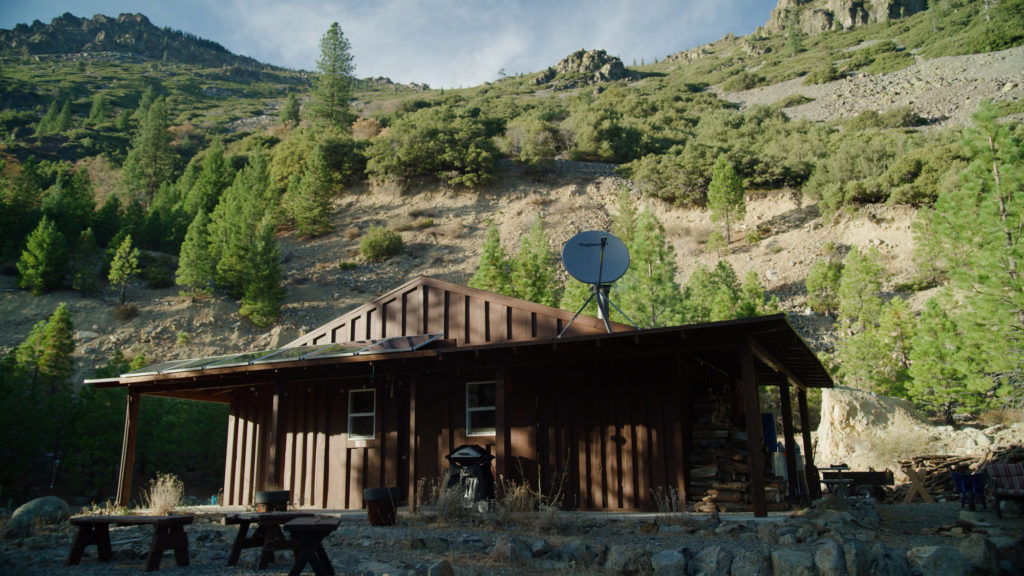
Depending on the owners’ preferences, an off-grid cabin could get away with just a small amount of electricity for essentials like lights, heating or cooling, and potentially a water pump. In these cases, owners may be able to have a relatively low amount of electricity generation capacity of a few hundred watts an hour.
However, the more comforts of home you add, the more power you need. Cabins with multiple appliances, electronics, or other devices will require more power, sometimes significantly more. If you’re considering your own power needs, you can find the wattage various items use either printed on a label on them or online.
So how exactly do you get the juice flowing in your off-grid paradise? There are a few options, each with their own benefits and costs. Here’s a look at the top choices.
A lithium battery bank can be a vital part of your off-grid cabin, though it will need to work in concert with another energy source. Batteries charged by solar, wind, hydro, and traditional electricity can connect to your off-grid power system. The system will draw from the batteries as needed. This can go a long way toward powering the basics of an off-grid home.
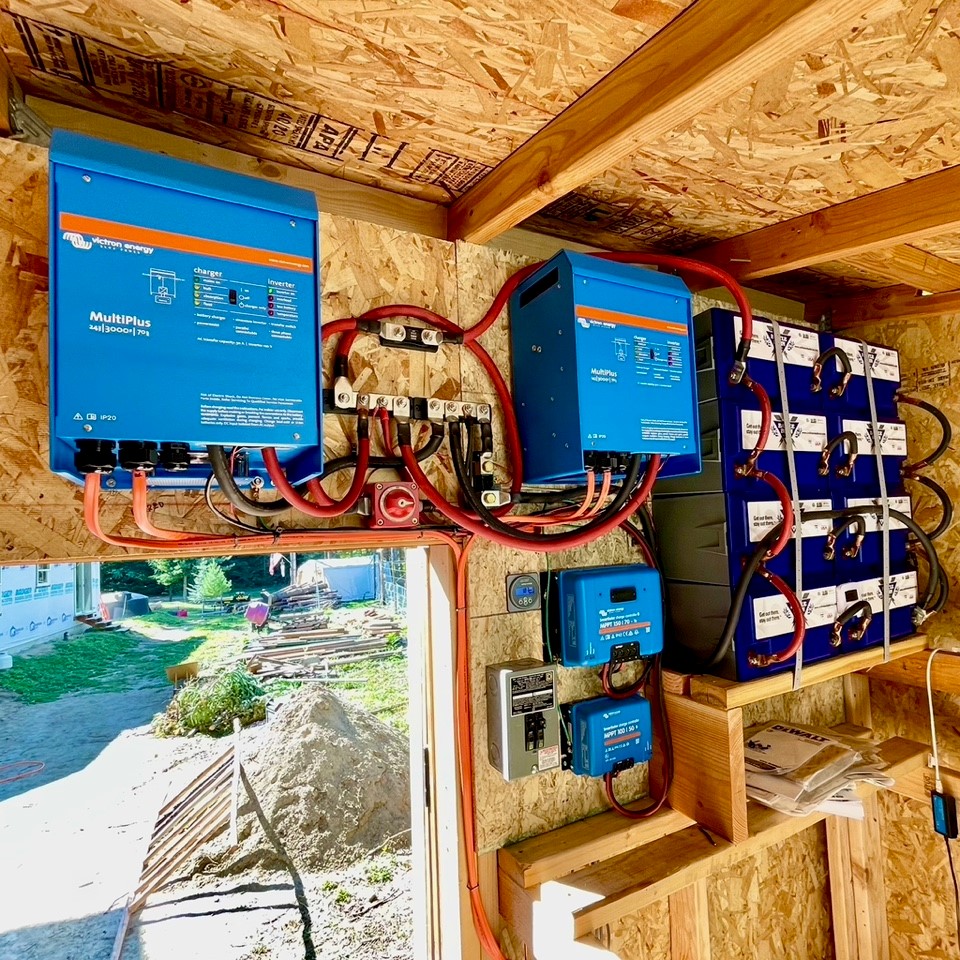
Perhaps the most common type of off-grid and renewable energy, most people have at least heard of solar panels now. The large, shiny black or blue panels take the energy from the sun’s rays and convert it into electricity. You can mount the panel permanently on a place like a roof or use portable panels that you can move as needed.
Owners can add an almost unlimited number of panels and scale up their system to fit their needs and budget. The biggest downside is that they won’t provide any electricity for you at night and provide less on cloudy days or in certain climates. Still, they’re among the most common off-grid cabin power systems due to their relative ease of installation and usability in most places.
Discover the Major Components of an Off-Grid Solar System.

For off-grid cabins in breezier spots, wind can also provide energy. Much like any other windmill, wind turbines use blades to catch the wind, which turns a turbine that creates electricity. While turning every passing breeze into power might seem appealing, wind turbines don’t generate electricity until the wind reaches a certain speed, known as the “cut-in” speed.
Windmills also have a “cut-out” speed where they shut down to protect themselves if winds blow too fast. This can mean you may not produce as much energy from wind as you might expect. Nonetheless, these systems can be an excellent choice for windy locales, especially ones where solar or other off-grid energy types won’t do enough on their own.
→ Learn more about How Wind Turbines Work.
Micro-hydro systems use the same concept as those big hydroelectric dams you may have seen, just scaled down for personal use. Water is diverted from a river, stream, or other waterways. It flows down an alternate channel where a turbine or waterwheel converts the water’s energy into electricity.
These are among the least-common off-grid cabin setups, primarily due to the need to be near water and the difficulty of building and maintaining a hydro system.
Most people are familiar with generators, either from power outages at home or as a way to keep the lights on while camping or away from the grid. While they can provide a decent amount of reliable power, they’re best as a short-term option only.
Many generators struggle to power an entire home for an extended period and will require large amounts of gas. This forces owners to stock up on gasoline and deal with the air and noise pollution that most generators produce.
Whether you use solar, wind, or water, one thing holds true: You aren’t guaranteed to have energy produced at any given time. For solar, you won’t be producing at night, and windless days or droughts can leave those relying on wind or hydro in the lurch. Thankfully, a good battery bank can solve this. Battery banks will store the energy produced by your system in times of excess to use in times of need.
But there’s a lot more to a battery bank than just hooking up any old battery. Many homeowners opt for flooded lead-acid batteries, the cheapest and most inefficient of the deep-cycle batteries. While these can save you money upfront, they require regular maintenance to operate correctly and need to be replaced every few years.
Other lead-acid batteries like AGM (absorbent glass mat) eliminate the maintenance requirement. But they cost more and still come with other lead-acid drawbacks like difficulty operating at high or low temperatures. You also have to be careful of how deeply you discharge these batteries.
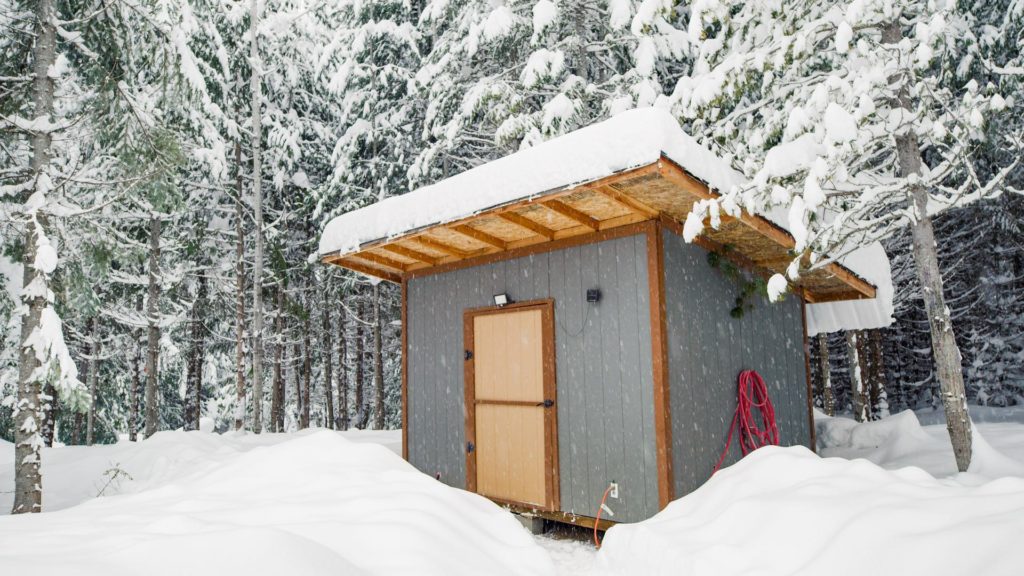
Alternatively, those looking to build an off-grid cabin battery bank can opt for the newest battery technology — lithium-ion. Lithium batteries are maintenance-free, work well at nearly all temperatures, can be fully discharged, and charge more quickly than their lead-acid counterparts.
Even better, they’re lighter and smaller and can last years longer than traditional batteries. While they’re likely more expensive initially, many owners find the cost worth it for the reduced hassle, increased capacity, and longer-lasting equipment.
Solar power is unquestionably the top option for those looking for reliable power for their off-grid cabin getaway. Unlike a battery bank or generator, solar is renewable, clean, and endlessly available as long as the sun shines.
Meanwhile, wind and micro-hydropower can present problems finding a suitable site, buying equipment, and ensuring a steady flow of power. Solar also offers the benefit of being among the most-commonly available off-grid power systems, meaning more affordable parts and installation and more choices.
This will again depend strongly on the cabin’s location and power needs. Solar panels can vary widely in the energy they generate. Small panels produce less than 100 watts per hour in ideal conditions.
Meanwhile, mega-sized, high-end ones produce as much as 400 watts per hour. It’s crucial to understand your energy needs to size your solar panels and batteries properly. It’s also generally good to add additional capacity if your budget and design allow it.
Absolutely, though it may not be easy. Especially for those with moderate to low power requirements, it’s completely possible to power a cabin solely on solar. Typically, owners need to invest in a significant number of panels and ample battery storage. This serves as a backup when the natural sunlight isn’t ideal for power generation.
Running solely on solar power will also be easier for those in sunny climates. They can make the most of the sun’s energy. However, those with large power needs or in spots that don’t receive much sunlight may find this power source difficult.
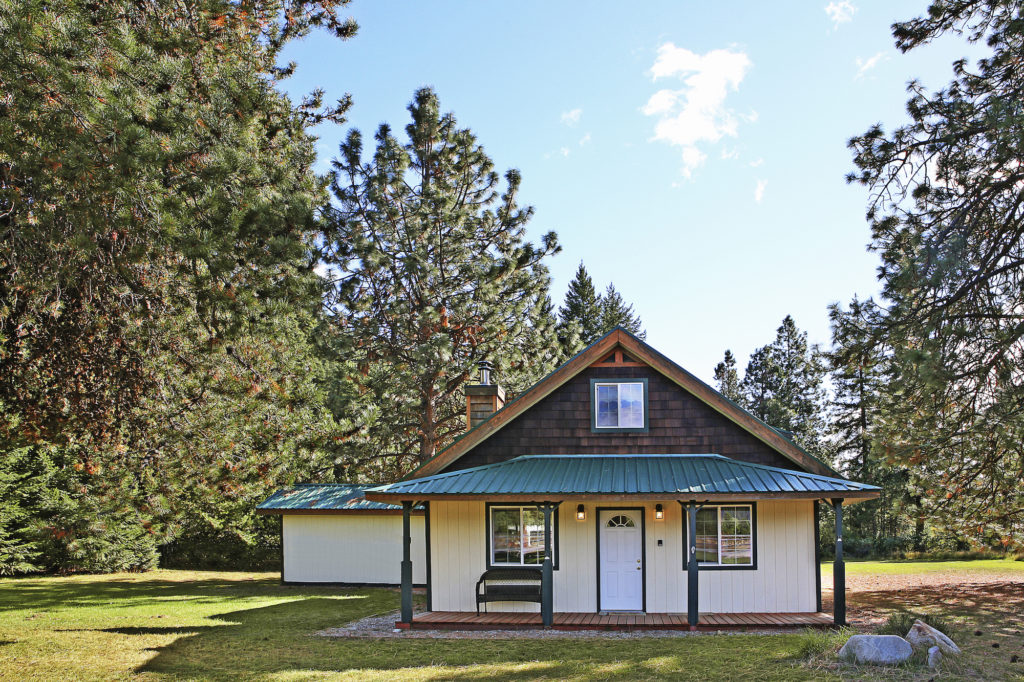
There are plenty of different strategies for keeping the lights on when off-grid. With the sun, wind, water, and more, there’s truly no need for traditional electrical infrastructure. But the best choice for most should be clear. A solar power system with a battery bank is the most cost-effective, versatile electrical system for your off-grid cabin.
We know that building or upgrading an electrical system can be overwhelming, so we’re here to help. Our Reno, Nevada-based sales and customer service team is standing by at (855) 292-2831 to take your questions!
Also, join us on Facebook, Instagram, and YouTube to learn more about how lithium battery systems can power your lifestyle, see how others have built their systems, and gain the confidence to get out there and stay out there.
Shop Best Sellers

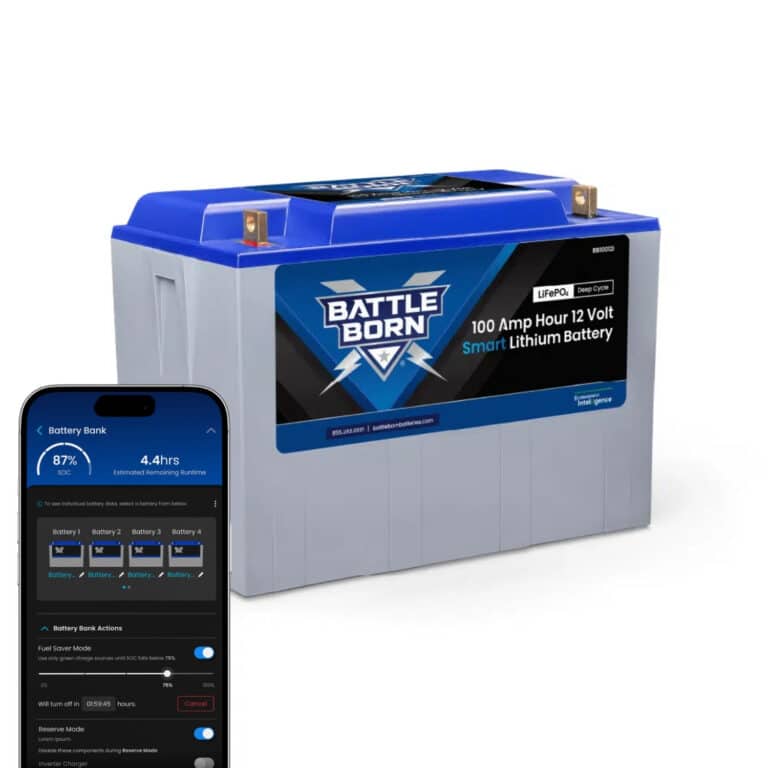

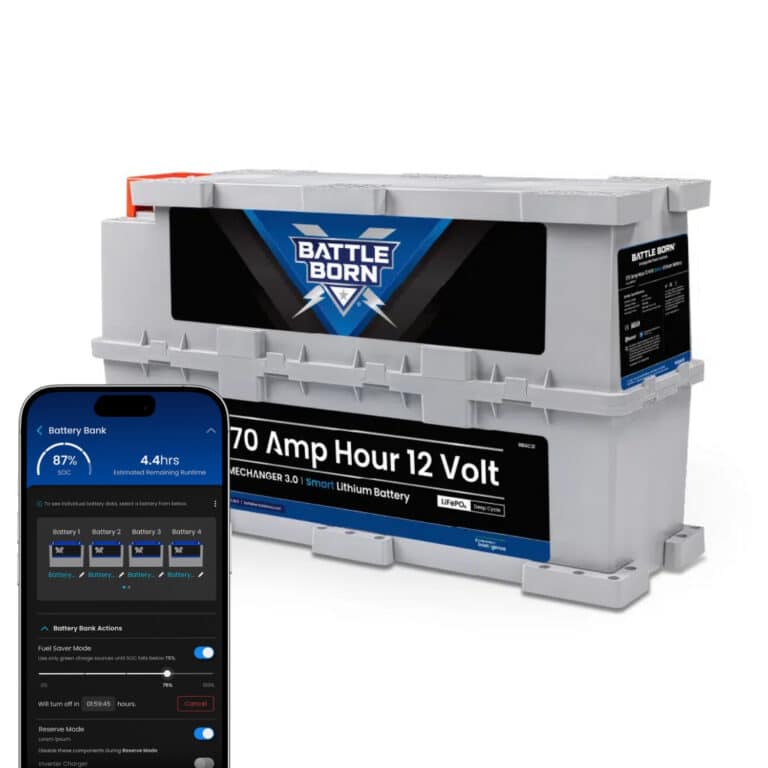




Ask a technical specialist now at 855.292.2831
Stay in the Know
One thought on “How Can I Power My Off-Grid Cabin?”
I have river front property and setting up 2 campers on Airbnb. I’m looking into a solar/battery power system and generator